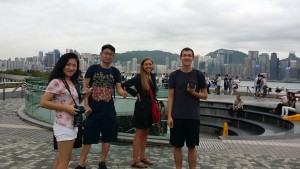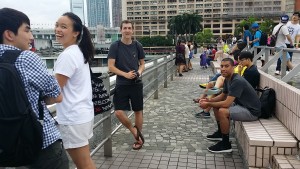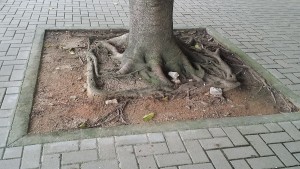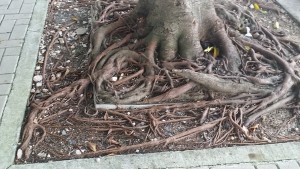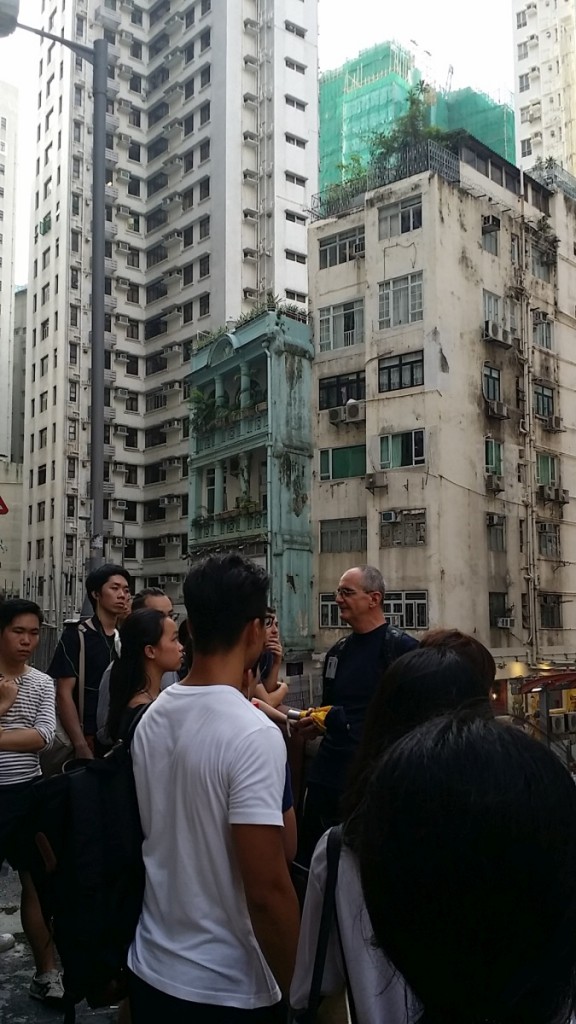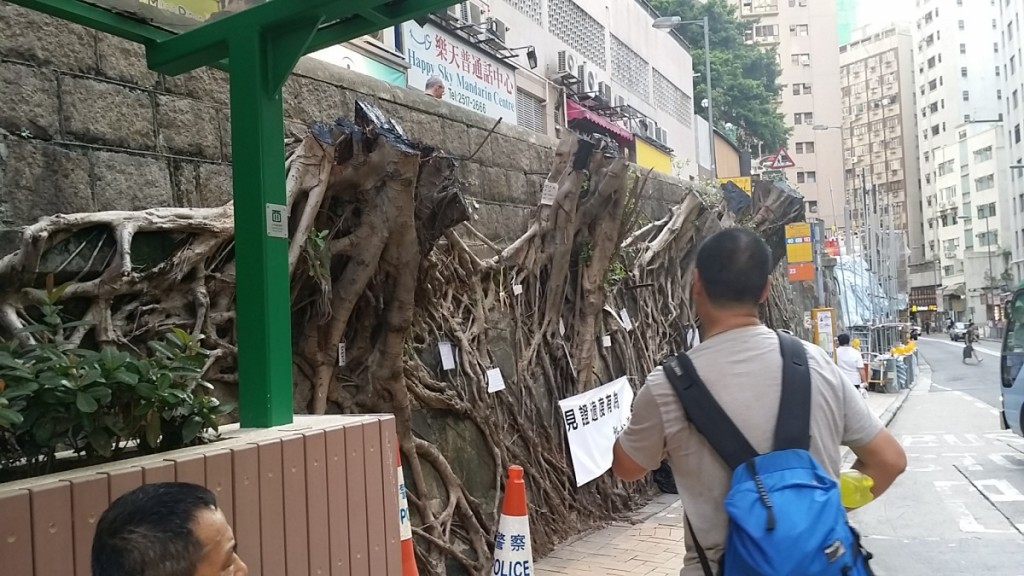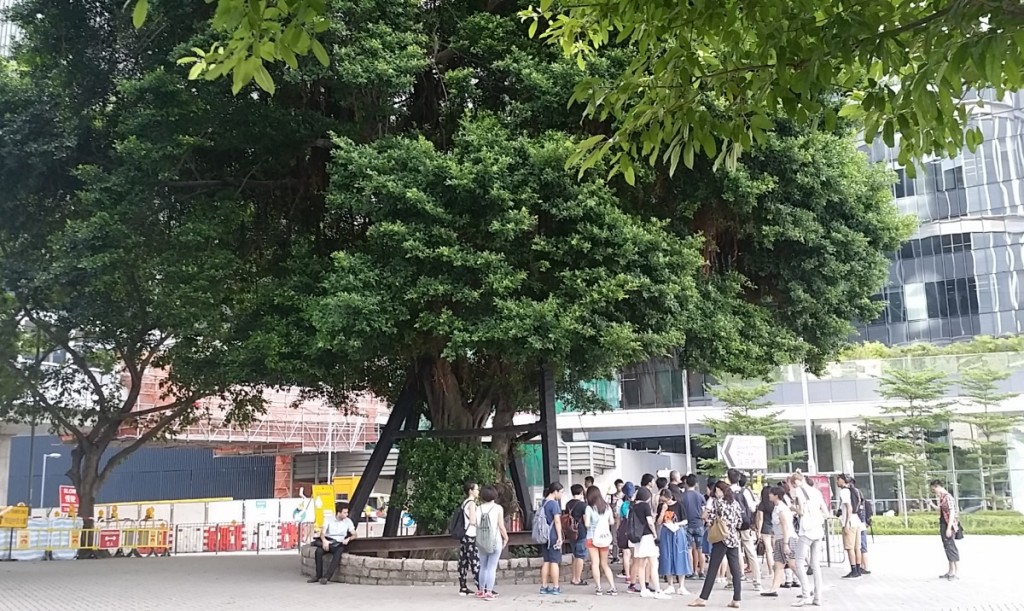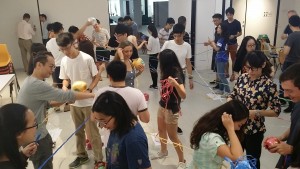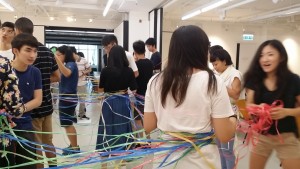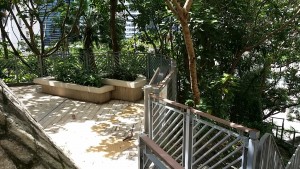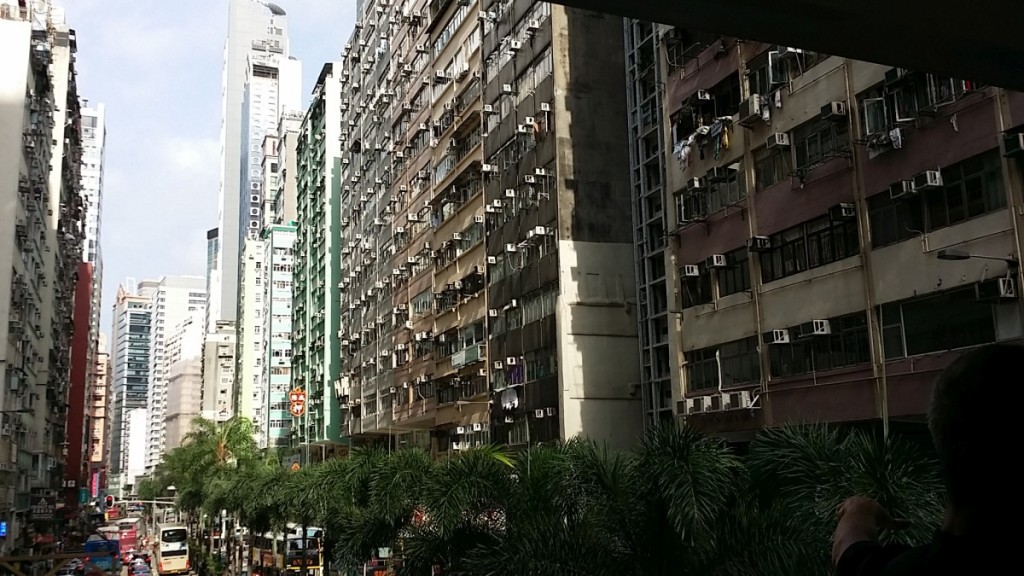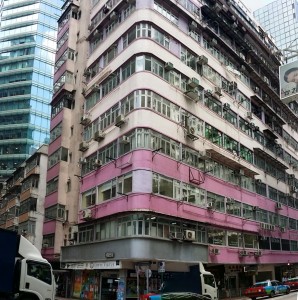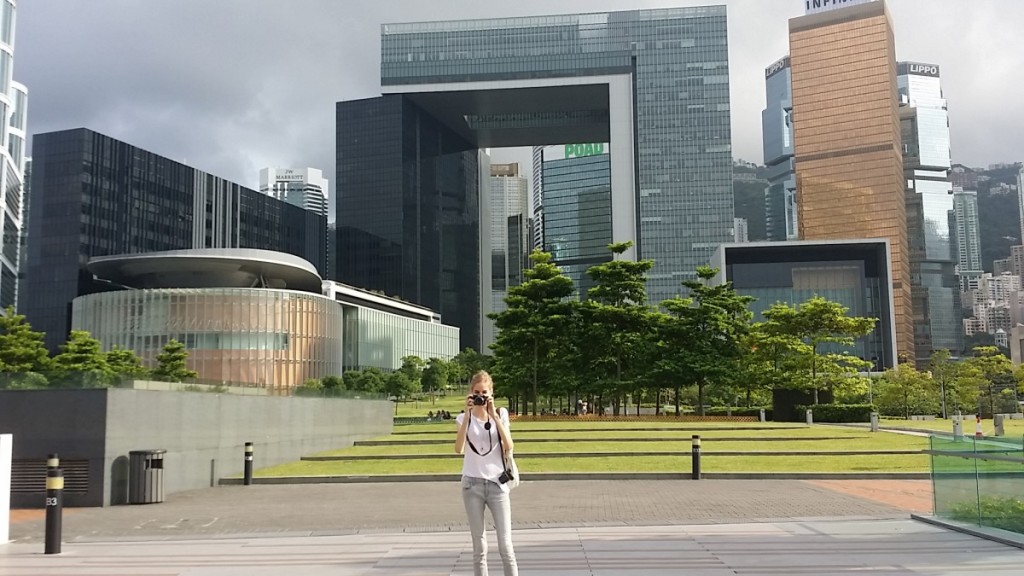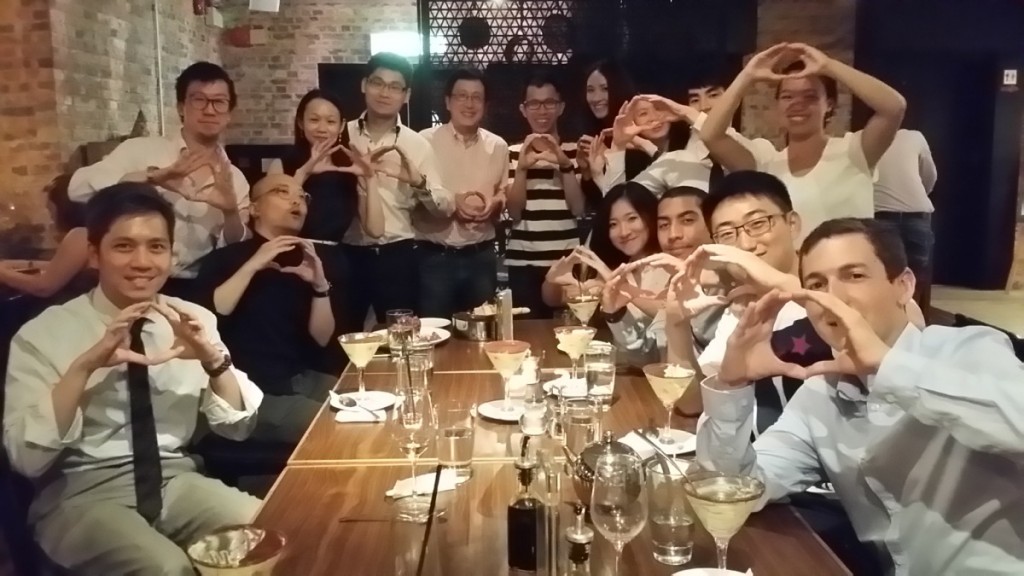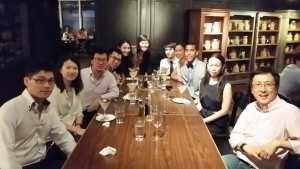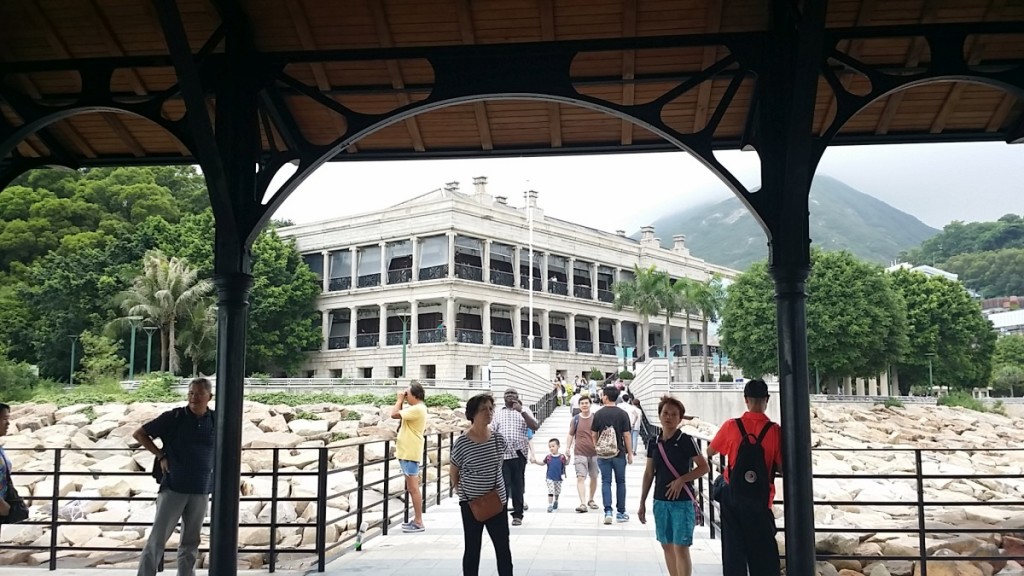We started the Hong Kong program with a marathon. For better or worse we were blessed by raging thunderstorms this morning, which cooled the temperatures enormously but limited our walking tour possibilities. Two gracious and patient HKU MLA 2nd year students, Jasmine and Laura gave us a nice walk through the campus, helping us get oriented to the newer parts of campus. It was helpful for our students to connect with local students. Jasmine came with a Bachelor’s in Interior Design, Laura comes from Surabaya, Indonesia. In a class of 30, she is the only international student outside of the strong mainland Chinese contingent who make up about half of the class.
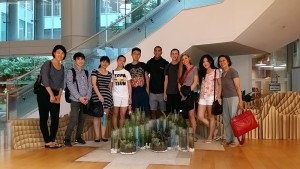 It has been great to get a warm welcome from Matthew Pryor, Maxime Decaudin, Gavin Coates, and Vincci Mak of the L.Arch. department. They provided us with a handy orientation booklet with maps of local resources and copious listings of eating places. On Friday, they scheduled a very practical talk by Barnaby Smith about the steps in executing a playful resort landscape on the roof of large Macau casino podium. He explained in detail the challenges of working with many players in trying to realize a complex project with many water and landscape features. The talk emphasized crucial technical decisions and their consequences, including waterproofing the surfaces, preparing the soil, cultivating plants and installing the plants. I was most surprised at how the HKU students were articulate at asking thoughtful questions, as from my previous HKU teaching I was used to students who would signal respect with quiet.
It has been great to get a warm welcome from Matthew Pryor, Maxime Decaudin, Gavin Coates, and Vincci Mak of the L.Arch. department. They provided us with a handy orientation booklet with maps of local resources and copious listings of eating places. On Friday, they scheduled a very practical talk by Barnaby Smith about the steps in executing a playful resort landscape on the roof of large Macau casino podium. He explained in detail the challenges of working with many players in trying to realize a complex project with many water and landscape features. The talk emphasized crucial technical decisions and their consequences, including waterproofing the surfaces, preparing the soil, cultivating plants and installing the plants. I was most surprised at how the HKU students were articulate at asking thoughtful questions, as from my previous HKU teaching I was used to students who would signal respect with quiet.
I was very glad that all the students had arrived safely. Everyone was very excited to be exploring the city together. We have two ringers, the young second year architecture students, Bella Wu and Kevin So, who speak Cantonese and have previously visited the city. Isabella, who is quite familiar with Kowloon, was invaluable in helping navigate and interpret.
The Hong Kong Museum of History provided great overview of the Hong Kong’s natural environment, its ancient heritage and contemporary development. While I had read rave reviews about the museum, I was still surprised to see the scale of the installations, which dramatically depicted both natural environments (such as tropical forest, upland stream, mangrove forest) and architectural structures. The traditional residences, row of shops and recreations of festival structures were particularly impressive in their richness of detail. While I studied the geological, ecological and urban development displays for our program, I was amused by the plastic toys and 60’s rock and roll images. The museum showed how Chinese and Western people intersected in the political, business and domestic realms, including pivotal events such as the Japanese occupation and the 1997 handover.
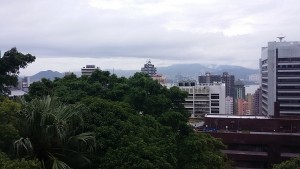
Delighted to have a great view from my room at Robert Black College.
Overall, it was impressive to see the material culture organized in clear logical themes and eras. While the museum focuses on the specific situation of Hong Kong, it provides the larger context of the Earth’s geological development, evidence of ancient to recent Chinese habitation. While the farming and fishing industries are inextricably dependent on forces of nature, much of Hong Kong’s pride comes from its man-made achievements such as trade, transportation and the financial industry.
Because the rain subsided, we were able to walk through Kowloon Park and crowded shopping areas to the Tsim Sha Tsui promenade. While the crush of people made it difficult to navigate, glimpses of lush nature and surreal slick mega-advertising provided relief. At the harbor edge, we enjoyed the expansive view of Hong Kong’s skyline with delightful cool breezes before taking the classic Star Ferry, on the lower deck to feel the roll of the ocean. – Nancy Cheng
